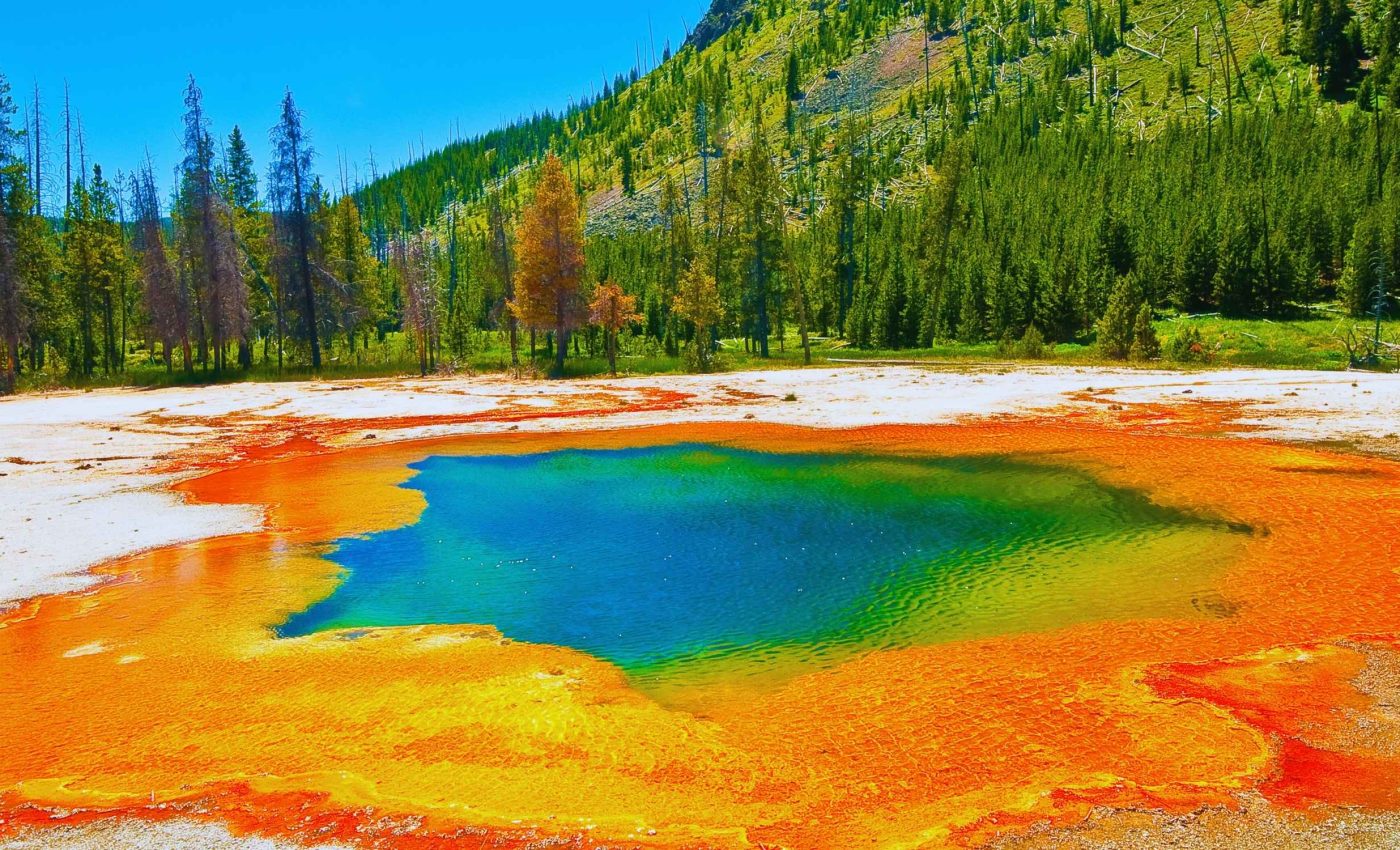
Magma layer keeps the Yellowstone supervolcano dormant
Yellowstone National Park (YNP) holds plenty of surprises, from dramatic geysers to bubbling hot springs. Few suspected that a hidden geologic structure might be one of the biggest factors helping to keep its massive volcanic system calm.
Scientists recently uncovered a hidden magma cap about 2.4 miles (4 kilometers) below the surface, that is composed of a porous mixture that allows gases to escape. One of the researchers, Brandon Schmandt, is a professor of earth, environmental and planetary sciences at Rice University.
Yellowstone’s fascinating volcano
Yellowstone’s volcanic system has fascinated geologists for decades. They have long suspected molten rock lurks close to the surface.
In 2022, another group of experts found that the supervolcano contains more magma than once believed. That raised concerns about how much pressure could be building under the ground.
The latest seismic imaging campaign used a 53,000-pound vibroseis truck to send low-frequency vibrations into the earth. Reflective signals from those vibrations helped pinpoint unusual features at depths that few had ever probed before.
There was a moment when reflections showed “something physically happening” at that depth, said Schmandt.
Beneath the surface
The cap itself appears to be a mix of molten silicate materials, supercritical water, and rock with openings that allow gas to flow. Supercritical water is water that is heated beyond 700oF (371oC), and is transitioning into a dense, fluid-like phase.
This combination forms a barrier that traps deep heat yet still permits venting of volatiles, which are gaseous substances released by rising magma.
Volatiles like water vapor and carbon dioxide often determine whether magma stays underground or forces an eruption.
Stabilizing the Yellowstone volcano
Yellowstone is famous for its hydrothermal features that release gas from underground. That might be an important factor in keeping large eruptions at bay.
“Although we detected a volatile-rich layer, its bubble and melt contents are below the levels typically associated with imminent eruption,” noted Schmandt.
Geologists think the system is steadily relieving pressure through cracks and channels. This allows bubbles to emerge and vent rather than staying trapped and building up pressure inside the magma reservoir.
Challenge of noisy Yellowstone data
Collecting seismic data in a place like Yellowstone is anything but easy. Rocks of different ages and compositions scatter signals in all directions.
“When you see noisy, challenging data, don’t give up,” said researcher Chenlong Duan, who helped develop advanced techniques to clarify those signals. The imaging process initially looked chaotic.
Fieldwork conditions were also demanding. Crews had limited road access and worked at night to avoid interfering with park visitors.
Pushing seismic imaging to new limits
Getting clearer images of what lies beneath Yellowstone required more than just brute-force equipment. Duan developed a custom wave-equation imaging technique during his Ph.D. to make sense of irregular, scattered signals.
This method allowed the team to process vibrations in a way that standard tools couldn’t handle.
By adapting this approach and combining it with the STA/LTA function – typically used to detect earthquakes – the researchers managed to sharpen the blurry data into a coherent picture.
A glimpse into deeper volcanic processes
Scientists believe the cap has about 14% porosity, meaning tiny spaces in the rock are filled with pockets of melt and supercritical water. This leftover space allows for gas flow that releases pressure instead of forcing a catastrophic eruption.
Once the results made sense, they hinted at how the volcanic system “breathes” in a steady pattern. Gas keeps rising and escaping, making it less likely to build up dangerous levels of pressure.
Significance beyond the Yellowstone volcano
Understanding the conditions underground is key for monitoring volcanic hazards. Similar imaging techniques could help track changes in the upper boundary of other active systems as well.
Volcano experts will now watch for any shifts in that cap’s melt or gas content. If future surveys detect a sudden increase in trapped fluid, that might signal a riskier condition.
These insights also support broader research on carbon capture and geothermal exploration. Subsurface gas flow is a shared theme across different fields, so Yellowstone offers a real-world lab to test new ideas about how fluids move in the crust.
Future research directions
Each new puzzle piece brings us closer to understanding Yellowstone’s volcanic system. More detailed modeling might reveal subtle changes in gas release over time.
Researchers aim to use advanced seismic methods, better data coverage, and more robust computer simulations in future. These efforts could give clearer pictures of structures that help contain magma in other large volcanic areas.
The study is published in the journal Nature.
—–
Like what you read? Subscribe to our newsletter for engaging articles, exclusive content, and the latest updates.
Check us out on EarthSnap, a free app brought to you by Eric Ralls and Earth.com.
—–













